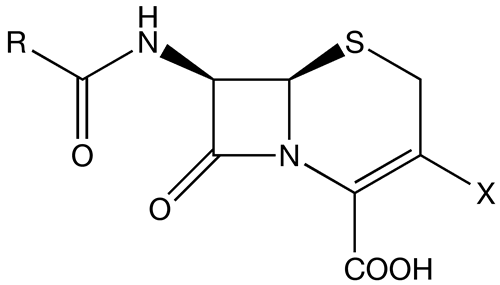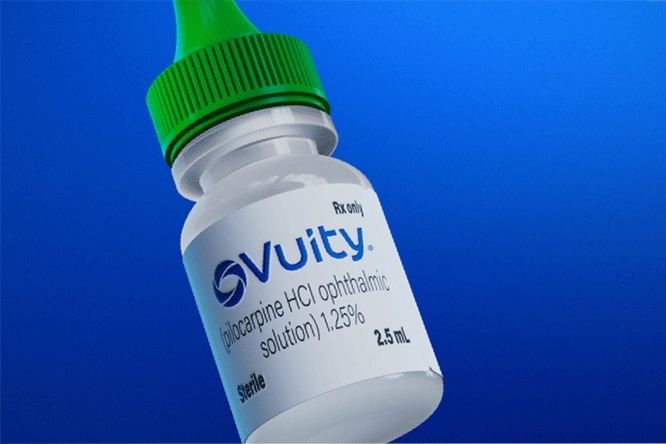
Mechanism of Action of Cephalosporins
Cephalosporins are a class of β-lactam antibiotics that inhibit bacterial cell wall synthesis. They achieve this by binding to penicillin-binding proteins (PBPs), which are essential for the cross-linking of peptidoglycan layers in the bacterial cell wall. This binding inhibits the transpeptidation enzyme, leading to a weakened cell wall and ultimately causing lysis and death of the bacteria. The mechanism is similar to that of penicillins, but cephalosporins have a broader spectrum of activity against Gram-positive and Gram-negative bacteria.
Generations of Cephalosporins
Cephalosporins are categorized into four generations based on their spectrum of activity and pharmacological properties:
1. First Generation
- Examples: Cefazolin, Cephalexin
- Spectrum: Primarily effective against Gram-positive cocci (e.g., Staphylococcus aureus, Streptococcus pneumoniae) and some Gram-negative bacteria (e.g., Escherichia coli, Klebsiella pneumoniae).
- Clinical Use: Often used for skin infections, surgical prophylaxis, and urinary tract infections.
2. Second Generation
- Examples: Cefuroxime, Cefoxitin
- Spectrum: Increased activity against Gram-negative bacteria compared to first-generation cephalosporins while retaining some effectiveness against Gram-positive organisms.
- Clinical Use: Used for respiratory tract infections, intra-abdominal infections, and pelvic inflammatory disease.
3. Third Generation
- Examples: Ceftriaxone, Ceftazidime
- Spectrum: Broad-spectrum activity with enhanced efficacy against Gram-negative bacteria; some agents have good CNS penetration.
- Clinical Use: Effective for severe infections such as meningitis and sepsis; ceftriaxone is commonly used for community-acquired pneumonia.
4. Fourth Generation
- Examples: Cefepime
- Spectrum: Broad-spectrum activity against both Gram-positive and Gram-negative organisms, including Pseudomonas aeruginosa.
- Clinical Use: Indicated for complicated infections like febrile neutropenia and hospital-acquired pneumonia.
Antimicrobial Spectrum and Pharmacokinetic Properties
Cephalosporins exhibit varying antimicrobial spectra across generations. Generally:
- First-generation cephalosporins target mainly Gram-positive bacteria.
- Second-generation cephalosporins broaden the spectrum to include more Gram-negative organisms.
- Third-generation cephalosporins further enhance coverage against resistant strains.
- Fourth-generation cephalosporins provide robust coverage against both groups.
Pharmacokinetics vary among generations:
- Absorption varies; oral formulations are available primarily in first and second generations.
- Distribution is generally good; third-generation agents can penetrate the blood-brain barrier effectively.
- Metabolism is minimal; most cephalosporins are excreted unchanged via the kidneys.
- Half-lives vary from 0.5 hours (first generation) to 2 hours or more (third generation).
Adverse Effects Due to Cephalosporins
Common adverse effects associated with cephalosporin use include:
- Allergic reactions ranging from mild rashes to severe anaphylaxis in susceptible individuals.
- Gastrointestinal disturbances such as diarrhea or nausea.
- Hematologic effects like thrombocytopenia or leukopenia in rare cases.
- Nephrotoxicity may occur especially when combined with other nephrotoxic drugs.
Superinfection and Cross-Hypersensitivity
1. Superinfection
Superinfection refers to an infection that occurs during or after treatment with an antibiotic that disrupts normal flora, allowing opportunistic pathogens (like Clostridium difficile) to proliferate.
2. Cross-Hypersensitivity
Cross-hypersensitivity occurs when patients allergic to one β-lactam antibiotic (like penicillin) also exhibit allergic reactions to another β-lactam antibiotic (like cephalosporins). This is due to structural similarities between these classes of drugs.
Mechanism of Action of Vancomycin
Vancomycin is a glycopeptide antibiotic that inhibits bacterial cell wall synthesis by binding directly to the D-alanyl-D-alanine terminus of peptidoglycan precursors. This action prevents cross-linking in the cell wall structure, leading to cell lysis particularly effective against Gram-positive bacteria such as Staphylococcus aureus (including MRSA).
Pharmacokinetic Properties, Therapeutic Indications, and Toxicities of Vancomycin
Pharmacokinetic Properties
- Absorption: Poorly absorbed orally; primarily administered intravenously for systemic infections.
- Distribution: Widely distributed in body tissues; penetrates well into bone but less so into CNS unless inflammation is present.
- Metabolism: Minimal hepatic metabolism; primarily eliminated unchanged by the kidneys.
- Half-life: Approximately 6 hours but can be prolonged in renal impairment.
Therapeutic Indications
Vancomycin is indicated for:
- Severe infections caused by resistant Gram-positive organisms (e.g., MRSA).
- Endocarditis prophylaxis in penicillin-allergic patients.
- Treatment of Clostridium difficile-associated diarrhea when metronidazole fails.
Toxicities
Adverse effects include:
- Nephrotoxicity especially at high doses or with concurrent nephrotoxic agents.
- Ototoxicity has been reported but is rare at therapeutic levels.
- Red man syndrome characterized by flushing due to rapid infusion rates can occur if vancomycin is infused too quickly.







